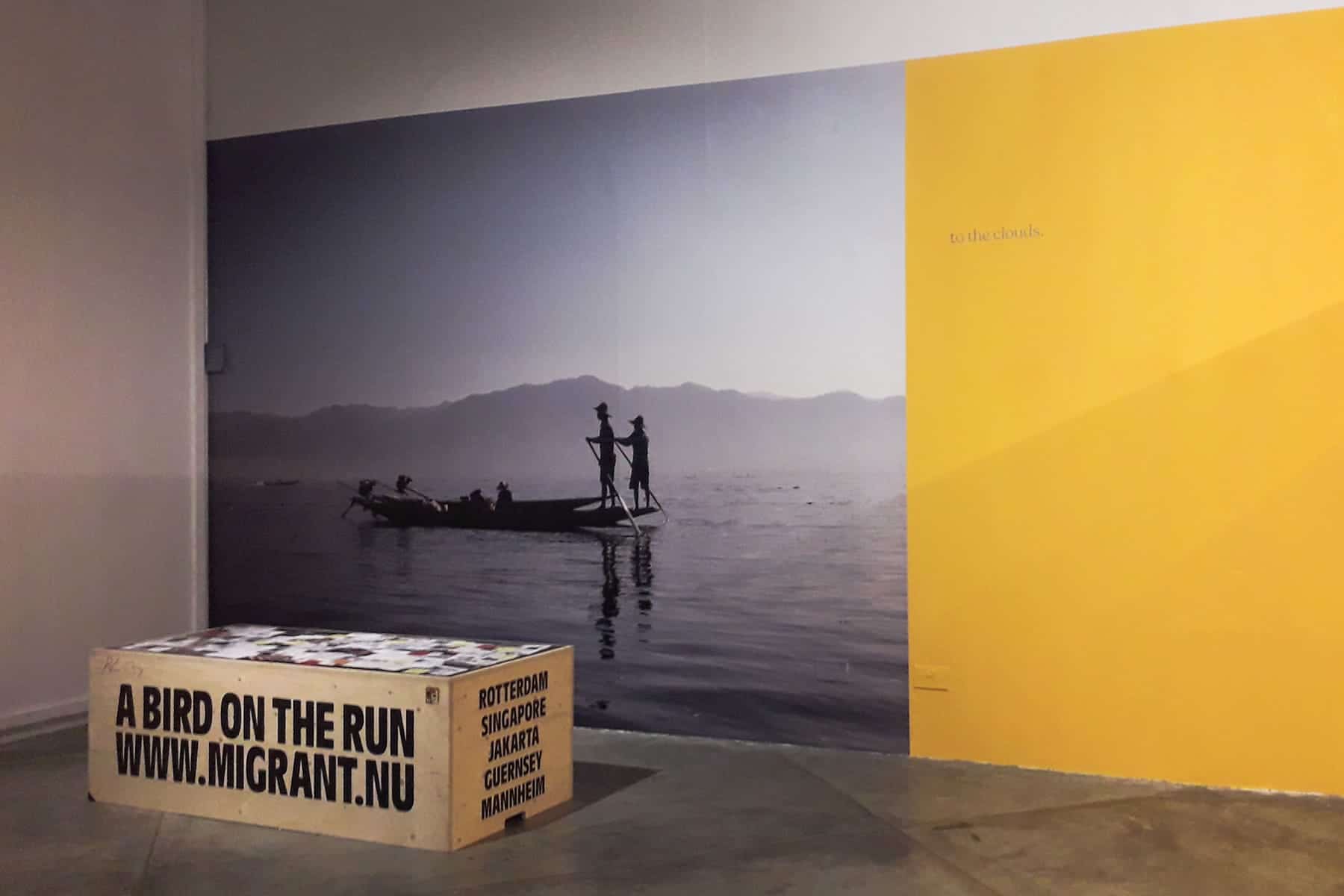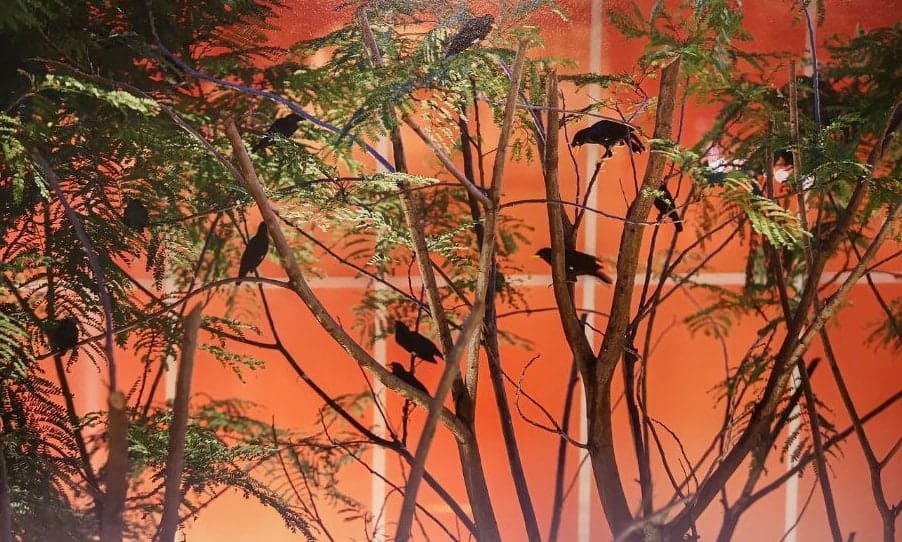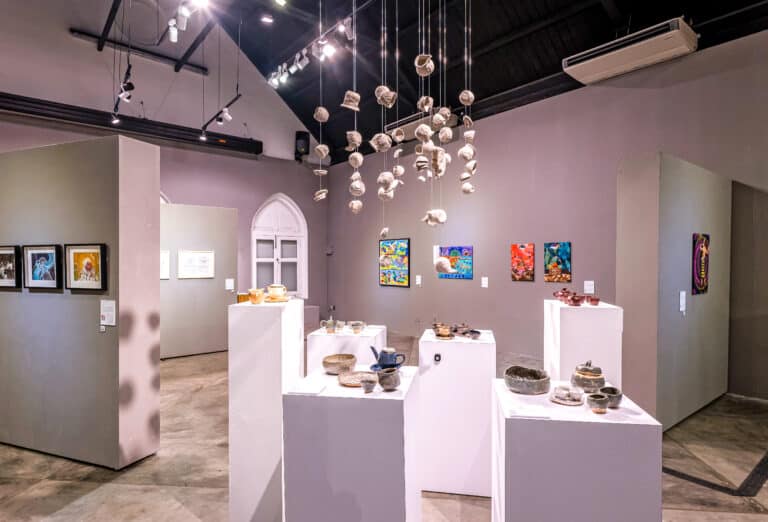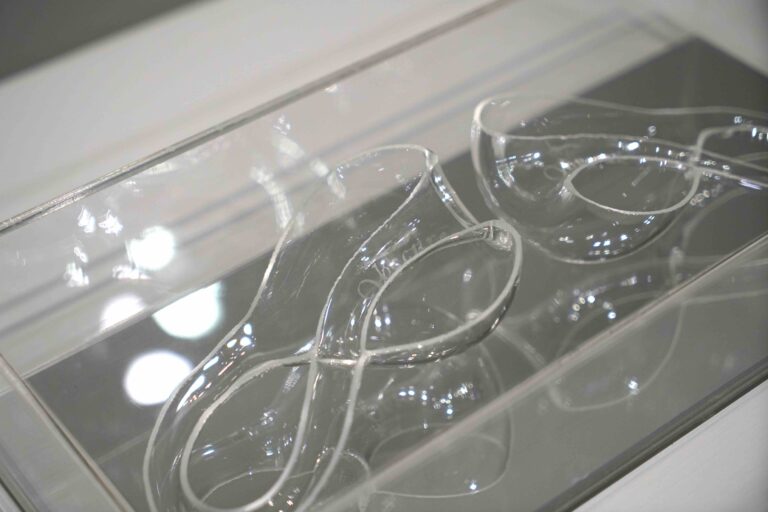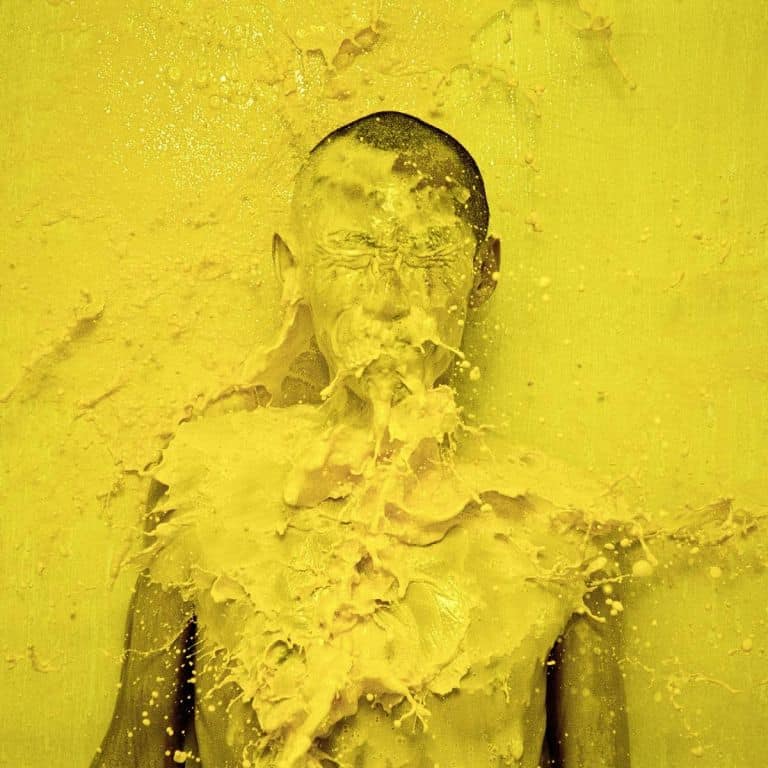The Migrant exhibition at Objectifs is packed with drama that’s conveyed not just through photographs and moving images that the much-loved institution is known for, but with texts, sounds, illustrations, and erm, wall paint.
And the star of the show? A little bird notorious for scooping down and scavenging your leftovers at coffeeshops: the Javan mynah.
This exhibition aims to salvage its blemished reputation, and it does so with flair. Entering the spacious gallery, I get hit by sounds no different from the street that I’ve just stepped off from. Honking cars, construction noise, and the squawking of those ubiquitous black birds with yellow beaks and feet in our city state. These play out amidst visuals of the busy Singapore urban landscape. The story begins as I watch a footage of a mynah cheerfully skip across a yellow-striped crosswalk, its claws going clack-clack-clack as they scratch against the dirty gravel.
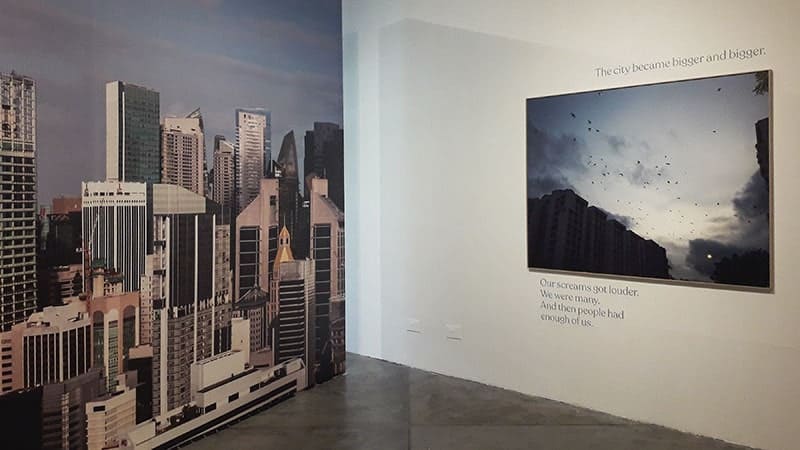
Most of the photographs in The Migrant are direct and illustrative, rather than evocative. They are either elegantly framed with light wood or are printed large on vinyl and stuck onto the walls such that I feel immersed in them as I draw close. Depicting everyday scenes in a typical manner, they are not the most interesting images in themselves. But accompanied by short snippets of text on the walls, they trace the intriguing, turbulent life story of its protagonist. They speak of the mynah’s departure from its home country, its introduction into Singapore as a prized songbird, and its descent into an outcast, a pest, or even – gasp, a terrorist – when its lovely sweet voice turns coarse as a result of rapid urbanisation.
The plot thickens, as the mynah befriends the also-vilified crows to seek solace, and the almost gleeful persecution of both species by mysterious licensed gun-bearing men from Singapore Gun Club. These men call themselves Robin Hoods or Brothers in Arms, out on a sacrosanct mission to hunt these birds and liberate Singapore from the supposed-catastrophe of their overpopulation. And I suspect they do this so as to perform and showcase a certain definition of masculinity deeply entrenched in their identity as well.
The story is fleshed out in detail in an absorbing 26-minute video clip at the back of the gallery. The clip interweaves both still images and archival materials such as newspaper articles and footage of passers-by on streets frantically fending off crows. Against evocative music playing in the background, audiences also hear from the mynah in first-person, the exhibition creator Dutch visual artist Anaïs López, and the various fascinating characters she has met, including a friendly biologist who performs autopsy on birds to find out their cause of death and has 400 birds stored in his freezer (aka a “monument to death”).
On display at the show are also illustrations by acclaimed comic artist Sonny Liew, a screen showcasing a top-down footage of a hand flipping through The Migrant photobook, and a large wooden case with images of research materials haphazardly categorised and laid out on top.
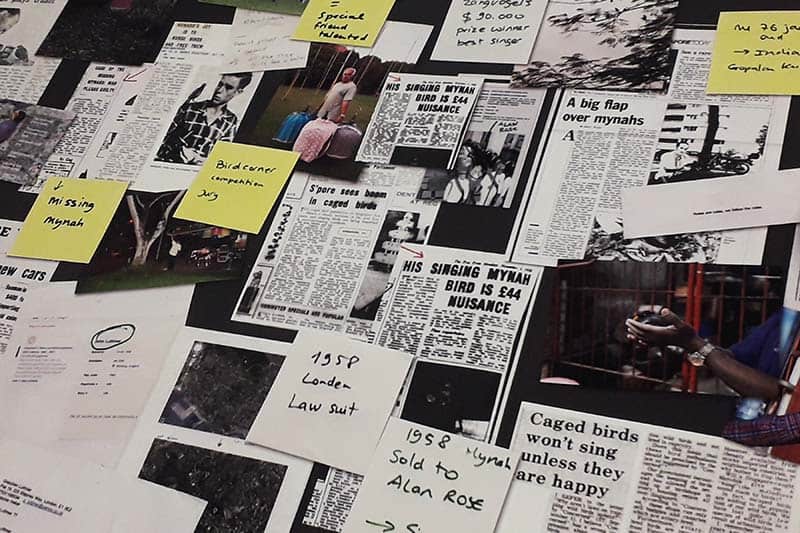
Put together, these different means – from moving image to illustration, sound to photography – tell the tale of the mynah with charm. One moment the artist comes across as a serious investigator, and the next moment, a quirky orator. There is playfulness, humour, and darkness driving the story forward. Audiences are kept engaged, even if the story follows the formulaic three-part linear arc that all storytellers know and secretly hide in their tool kit – a relatively calm beginning that sets the scene, a middle that reveals conflict and increasing tension, and an ending where the conflict is resolved.
The walls of the gallery space have also been painted in different colours to roughly correspond with these three stages of the narrative arc. In this way, they visually suggest the structure or the backbone of the tale, adding to a sense of drama in the show. A dark grey wall for instance, alludes to the fear of the mynah as it gets persecuted, while bright yellow walls speak of a happy ending as the mynah migrates to Myanmar. There, it gains respect for its divine ability to deliver heartfelt wishes of the people to gods above.
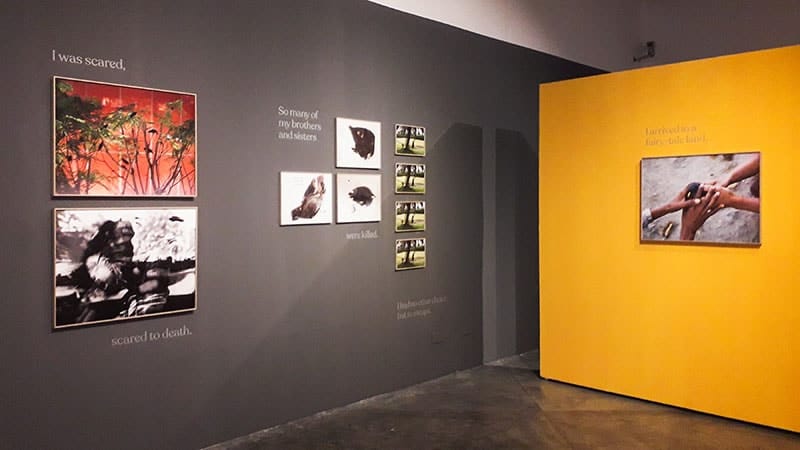
Delightful as the story might be, it is also a vehicle to provoke thought on themes such as the relationships between humans and animals, migration, and the position of the unwanted other. What are the consequences of our rapid urbanisation? How does a place become home? Who is excluded in the construction of an ideal society, and how are they systematically excluded?
By humanising the mynah (and giving it a splash of personality), The Migrant elicits empathy not just for the little bird, but for those marginalised in our midst. As I explore the show, I think of millions of people who have been uprooted from their homes, whether to escape from oppression or to seek better living conditions. I think about refugees, migrant workers, and other groups of people who have often been unfairly labelled as economic burdens or problems to be dealt with. I think about structural conditions such as economic disparity between nations that drive migration.
And that is the key strength of The Migrant: to stir thought about such complex issues in a refreshing manner. Unlike photographs of say, refugees in overcrowded boats that we are now so used to – or sadly, even numb to – in mainstream media, the position of the so-called outsider and the gravity of their plight at times are driven home through an enchanting story of a little black bird in this show.
I wander around the gallery a little more, mulling over the themes the exhibition delves into and the rather universal desire to belong. Pushing open the gallery doors, I step back out into the hectic Singapore urban landscape, with its honking cars and jarring construction noise. But this time, with a softer heart, I perceive the loud, raucous squawking of the Javan mynahs in a different light.
______________________________
The Migrant is on view at the Chapel Gallery, Objectifs Centre for Photography and Film till 30 May 2021. Given the evolving COVID-19 restrictions in recent times, please check the Objectifs social media pages for more information when planning your visit.
There will also be two upcoming online events via Zoom: a panel discussion featuring Anaïs López, Eefje Blankevoort and Sonny Liew on Wed 19 May, 7.30pm to 9pm, and a cross-media project sharing with Anaïs López and Eefje Blankevoort on Thurs 20 May, 7pm to 9.30pm. For details about online events related to the exhibition, visit the Objectifs website.
